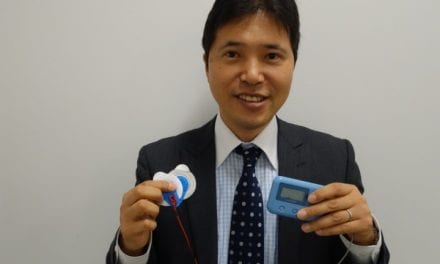Investigators surveyed health care providers as well as people with narcolepsy, and multiple discrepancies emerged. Are you and your patients on the same page?
When it comes to experiences with narcolepsy, unfortunately what health care providers don’t know can hurt you—and your patients.
A recent survey of 200 patients with narcolepsy and 251 physicians found that twice the percent of physicians (27.5%) felt that patients’ symptoms were well-controlled than what patients themselves reported (12%). Almost half of the physicians surveyed were board-certified sleep specialists.
“We still have a lot to understand about how narcolepsy affects the patients,” says lead investigator Michael J. Thorpy, MB, ChB. “As we know from these studies, it affects almost every part of their daily existence. But we need to have a better understanding about how it’s affecting them in their home life, and relationships with family members and others, and in their work environment, as well as the characteristic features of their symptoms and how we can help them deal with their symptoms.”
He presented the burden of narcolepsy survey poster at the 2019 Annual Meeting of the American Academy of Neurology and an encore poster at SLEEP 2019.
Another discrepancy uncovered by the survey is that only 25.5% of patients reported cataplexy as a symptom, but an additional 32.5% reported brief/mild muscular weakness triggered by emotions (the latter also falling within the medical definition of cataplexy). Thorpy says, “33% of physicians thought narcolepsy was difficult to diagnose. Most physicians don’t have a good understanding of the symptom of cataplexy. They may be more aware of it when it’s obvious, but less aware of its more subtle manifestations—and consequently patients are not aware of subtle weakness as being cataplexy.”
With a third of physicians reporting that narcolepsy is difficult to diagnose, education for health care providers is paramount to reduce the high occurrence of misdiagnosis. “Many physicians are not that familiar with narcolepsy,” Thorpy says. “And primary care physicians may not have a single patient with narcolepsy, which makes it difficult to understand the patient symptoms when presented with them.”
What’s more, education is also essential for the general public, Thorpy says. “There’s a need…for patients to recognize that if they have symptoms that are unexplained, they need to pursue a diagnosis, even if it means getting a second opinion.
“There’s a need to have more information available for the general public about sleep disorders and particularly about excessive sleepiness. There are a number of professional websites that are available to patients and they need to be publicized more. There are also patient organizations like the Narcolepsy Network and professional websites such as the National Sleep Foundation, as well other professional groups.”
The study was given financial support from Harmony Biosciences LLC, which markets a prescription drug therapy for narcolepsy. Harmony chief medical officer Jeffrey Dayno, MD, says, “We are actively trying to educate both the patient community and the healthcare provider community about narcolepsy to foster greater understanding and recognition of the symptoms of this disorder and an appreciation of the impact that narcolepsy has on people living with this disorder.” Harmony’s educational efforts include its non-branded disease awareness websites such as knownarcolepsy.com, which offer education for both patients and professionals.
According to the survey, one thing patients and physicians agree on is a need for better and improved therapies. But even here, there are some disconnects. Thorpy says, “40% of physicians were somewhat reluctant to prescribe scheduled medications for patients for narcolepsy, yet the majority of medications currently used for treatment of narcolepsy are scheduled medications.”
Physicians need a better understanding of available treatment options, Thorpy says. “Unfortunately, physicians are mostly familiar with the older drugs, which are the stimulants, and yet those drugs are considered third-line drugs to those of us who specialize in narcolepsy,” he says. He says many physicians do not have familiarly with newer drugs that are FDA approved for narcolepsy, including Jazz Pharmaceutical plc’s Xyrem (sodium oxybate) and Sunosi (solriamfetol) and Harmony’s Wakix (pitolisant).
Dayno says, “Discrepancies in the survey responses between patients and physicians suggest a need for better understanding of the burden of narcolepsy and improved communication between patients and healthcare providers.”
Sree Roy is editor of Sleep Review.



